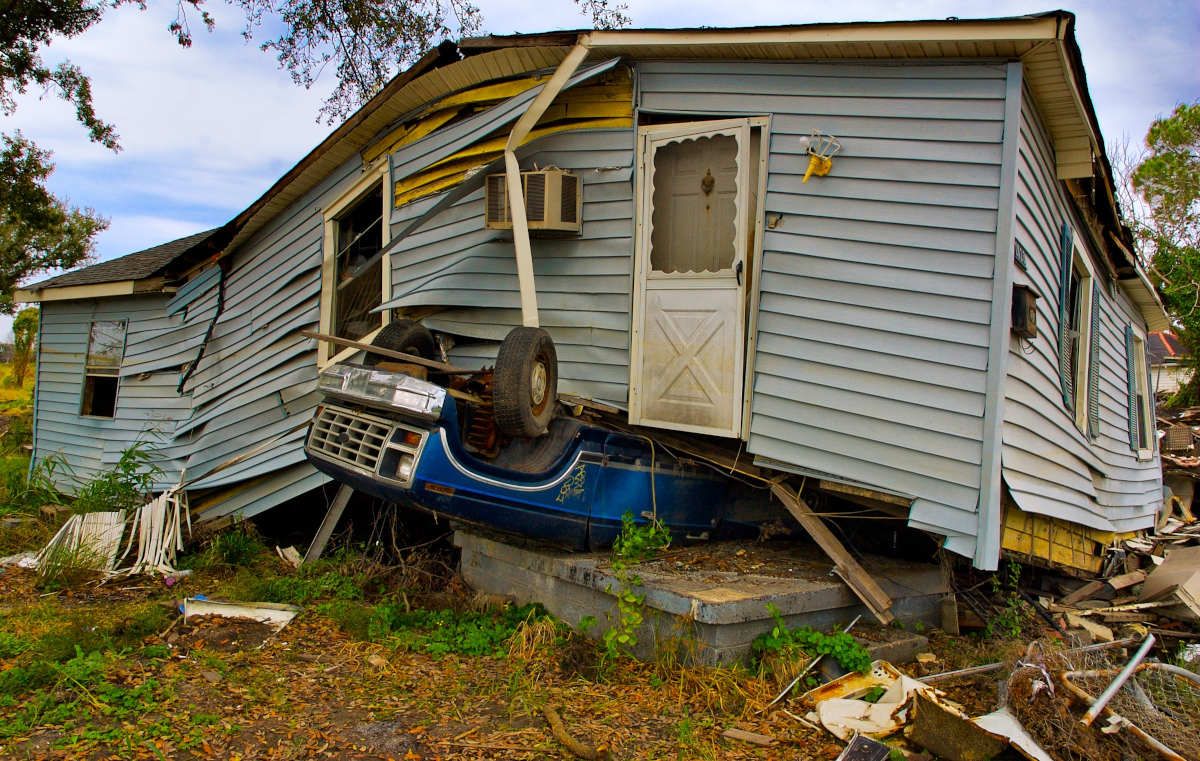Ian Swamps Insurers, Interest Rates Hamper Rebuilding

Hurricane Ian is gone but the devastation it leaves behind will weigh heavily on homeowners for years and may drive some low-income residents from the state. Wind and storm-surge losses from Hurricane Ian could reach as $47 billion in Florida alone, according to an analysis by CoreLogic.
Damage claims are likely to bankrupt many insurance companies, making it even harder for homeowners to find affordable coverage in the future. Meanwhile, surging interest rates nearing 7% and already-tight supplies of labor and materials will magnify the cost and difficulty of rebuilding.
“This is the costliest Florida storm since Hurricane Andrew made landfall in 1992 and a record number of homes and properties were lost due to Hurricane Ian’s intense and destructive characteristics,” said Tom Larsen, associate vice president for hazard and risk management at CoreLogic.
“Hurricane Ian will forever change the real estate industry and city infrastructure,” Larsen said in a news release. “Insurers will go into bankruptcy, homeowners will be forced into delinquency and insurance will become less accessible in regions like Florida.”
Larsen said the storm will likely be a wake-up call, spurring stronger building codes and more resilient infrastructure.
The only discernible bright spot is that prior to the storm, Florida’s real estate market was healthier than in many other parts of the country.
“In the second quarter of 2022, Florida posted one of the highest home equity gains in the U.S., with an average of $100,000 in equity per homeowner,” said Selma Hepp, interim lead of the Office of the Chief Economist, CoreLogic. “Florida also had the highest home price gains in July. Gains in equity and record declines in loan-to-value ratios will provide many Florida homeowners with a financial buffer in case economic conditions worsen, as is typically the case following natural catastrophes.”
Low-income housing crisis gets even worse
While the CoreLogic analysis provides at least scant comfort to more affluent homeowners and renters, Hurricane Ian has plunged many low-income Floridians into homelessness, with little assurance they will be able to continue living in Florida.
The state’s affordable housing crisis was already critical. The 150 mile-per-hour winds that leveled buildings and the storm surge that flooded large parts of the state left many residents in shelters while they considered their options.
While middle-class homeowners may be able to check into a motel while they rebuild their homes, the elderly and working poor who live on bare-bones budgets are left with few options. Many may be forced to leave Florida and seek affordable housing elsewhere.
“It’s a tragedy for them and it’s also a tragedy for the entire community, which has already been suffering from not having people able to live where they work,” said Jamie Ross, president and CEO of the Florida Housing Coalition, in a Washington Post report. Her group had estimated earlier this year that there was a statewide deficit of 500,000 homes that are affordable to lower- and middle-income families.
“We were already in a crisis before Ian came along,” she said.
Insurance doesn’t cover everything
Not that all is coming up roses for higher-income homeowners. As always after a major storm, there is confusion about what kind of damage is covered by homeowners policies as opposed to flood insurance. Many Floridians were already going without flood insurance, leaving them vulnerable to huge losses if damage to their home is deemed to be the result of surging waters rather than blowing winds.
Here are some questions and answers about storm losses and insurance from the Insurance Information Institute, an industry group:
Q. Are flood losses covered under my homeowners insurance policy?
A. Standard homeowners, condo owners, and renters insurance policies do not cover flood damage, including damage from a storm surge. Flood coverage requires a separate policy from the federally backed National Flood Insurance Program (NFIP) or a private flood insurer. Learn more information about flood insurance.
Q. Is property damage from a storm surge considered flood damage?
A. Your flood insurance policy covers damages from storm surges. A standard homeowners, condo owners, or renters insurance policy does not cover damage from floods, such as flooding from a storm surge.
Q. Is wind damage covered under my homeowners insurance policy?
A. Property insurance covers damage from windstorms, such as hurricanes and tornadoes, to the “residence premises.” These premises can be a single-family home, a duplex where the policyholder lives in one of the units, or any other building where the policyholder resides—as shown on the insurance policy declarations page.
A standard homeowners policy also applies to attached structures, such as a garage or deck, and “other structures” that are unattached, such as a separate garage building or shed and swimming pools. The policy includes coverage for damage to contents. Learn more information about homeowners coverage.
Q. My car was flooded in the storm. Is it covered?
A. Flood damage to vehicles, including flooding from a storm surge, is covered if you have purchased comprehensive coverage, also known as “other than collision” coverage, which is optional with a standard auto policy. About 80 percent of U.S. drivers carry comprehensive coverage. Learn about auto coverage.
See the Insurance Institute site for more questions and answers about storm coverage.
